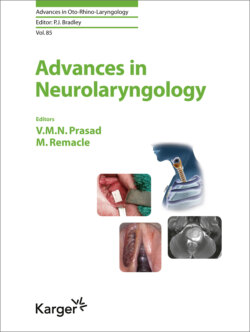Читать книгу Advances in Neurolaryngology - Группа авторов - Страница 55
На сайте Литреса книга снята с продажи.
Rarer Laryngeal Diseases and Neurological Diseases Laryngeal Dystonia (Spasmodic Dysphonia)
ОглавлениеThe MUP characteristics, recruitment potentials, and laryngeal nerve evoked potentials (EPs) are now characterized for patients with laryngeal dystonia using LEMG. The patients show significantly increased amplitudes of the MUPs of the TA. The recruitment potentials have a dense bunch, discharging full interference patterns with significantly increased amplitudes. After botulinum toxin injection, the EPs weakened or even disappeared in the injected muscle [21].
In a prospective case series with 5 subjects with laryngeal dystonia (spasmodic dysphonia), Pitman has used LEMG to guide hooked wire electrodes via the standard cricothyroid membrane approach into the TA. Using hooked wire electrodes, the symptoms of laryngeal dystonia could be improved by neuromodulation of the muscle spindle gamma loop via electrostimulation below the level of a-motor neuron activation for 1 h a day on 5 consecutive days [22]. Based on these results, an implantable electrical stimulation device similar to the already existing laryngeals pacemaker could provide in the future an alternative treatment for laryngeal dystonia beside botulinum toxin injections.
